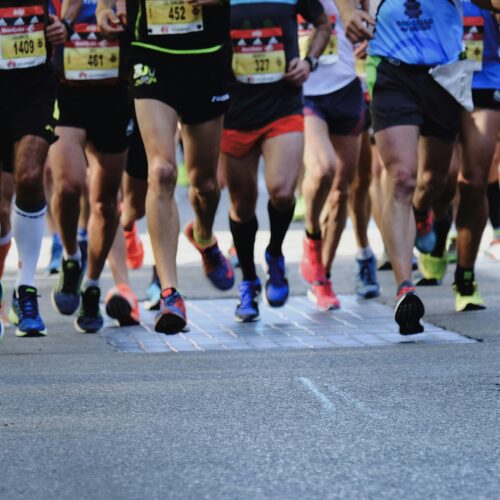Cross Training For Runners
Published on September 19, 2022Most of us have used cross training at some time to improve our fitness, avoid bad weather, help us recover from injury, or to add variety to our workouts. Cross training has several benefits if you are preparing for long distance events. The question is how do you use cross training and is cross training a better way to workout than event specific running workouts?
What kinds of cross training do runners use?
There are indoor and outdoor versions:
Stationary biking and road biking
Elliptical and Elliptigo
Stair Machine and Grouse Grind
Pool swimming and ocean swimming
Pool running and ocean running
It is often said that cross training will make you run faster and this holds true to a point. As your general fitness improves you run faster until you reach an event specific speed limit. You can’t run faster because you are not working out at a faster pace. At that point only running at a faster speed will improve your time. Increasing cross training intensity could slow you down by building the wrong muscles.
Which would make you a faster miler, 300m intervals or stair machine? I often hear that cross training is better than even specific running to improve race times. Using that logic cyclists and spin class elites would be the best runners, Grouse Grind champions would win the Sun Run and the best swimmers would win the First Half Marathon. On the reverse that would mean the best runners would win in the Velodrome, be able to cross the English Channel, be the fastest cross country skiers, and win the Grouse Grind. But it does not happen that way because those sports also have event specific training as well. If you are a triathlete you need to swim and cycle because that is part of the event and it is necessary to succeed.
When I raced duathlons I could run two times 14:15 for the 5km run but I could not win because I was not a fast enough cyclist. I arrived at the transition zone far ahead of everyone else but I was passed during the cycling stage and could not catch the first group on the run. Being a faster runner did not make me a faster cyclist.
Cross training has its place in running as it can improve your general aerobic fitness and help you get through difficult training times. Your fitness level will grow to a degree but if you want to run a faster 5km to marathon event specific training is better. For example 5x1km at 5k pace is far more effective at improving your race time compared to 5×4 minutes all out on a stationary bike.
I have used cross training to run a marathon when I had plantar fasciitis. I could not run more than 10km without my foot pain getting worse. I decided to complete 4 workouts per week and not run more than 10km: a) Monday Tempo workouts (event specific training for the marathon), b) Wednesday speed work at 10km pace, c) 90 minute indoor pool run, and d) 3 hours Long Run Substitution workout – 3 times (32 min elliptical, 20min stationary bike and 8 minute tempo runs on the treadmill). A weekly running total of 26km running per week and total 6 ½ hours of workouts. My foot improved enough that I felt I could run the 42.2km and I raced the Boston Marathon 10 minutes slower than my qualifying time. Cross training helped keep me fit and the tempo running workouts helped with some of my pacing. I finished but my time was not as good as if I had completed a few long runs over 30km before the race.
Another factor to consider is that you have a limited amount of time to workout and a limited amount of training energy per week. You may be able to workout 5 to 6 hours per week before you become too tired and your training is less effective. Everyone is different and at different stages of fitness and will have varying capacities to workout over time. Some people can workout 2 hours per week and others can workout 10 hours per week. If you have limited time and limited capacity to workout effectively you need to pick and choose your workouts that will help you reach your goals. If you are hammering away in a spin class one day there is a good chance you will be too tired to run a good workout the next day.
It depends on your needs. If you are injured and all you can do is cycle then it makes sense to spin intervals on a bike. If you are working out by yourself and you need a variety of training methods for motivation a swim could be a good answer. Cross training has its place for runners however if you want to run faster you need to practice running faster.
To me, it makes the most sense to use easy effort cross training to add to your aerobic base and to speed muscle repair from higher quality running workouts. Very slow moderate distance runs add little to your race fitness but do increase foot impact and chances of injury. Cross training can be used as a substitute for a slow recovery run.
Summary – High intensity cross training not an effective substitute for speed and tempo workouts and could be detrimental to race times (unless injured and cannot run). Low intensity cross training useful for recovery from high intensity running workouts. Helpful when injured or running limited by injury.
Note: You will find in James Nestor’s book “Breath” another potential powerful use for cross training. The development of nose breathing techniques that will greatly improve your endurance capacity without extra workout time. Easy cross training workouts are the perfect opportunity to improve your nose breathing techniques.



